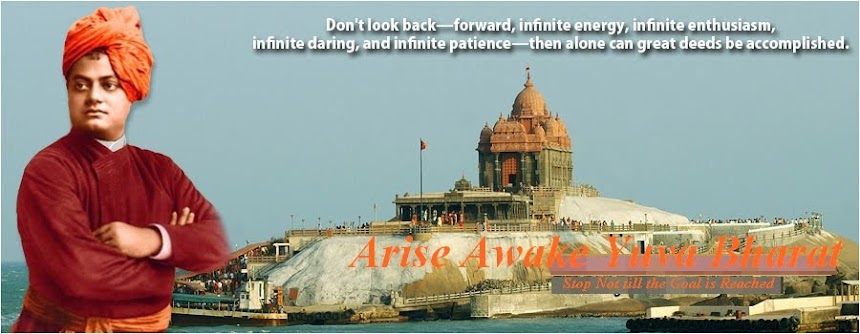Accession of J&K with India is Full & Final ¦ (JK STUDY CENTER)
Maharaja Hari Singh acceded Jammu & Kashmir to Dominion of India on 26 Oct 1947 under a legitimate instrument of accession. The Instrument of Accession Signed by Maharaja of Jammu and Kashmir Hari Singh ji was the same as was signed by other rulers of the other princely States of Indian Dominion . Similarly, the acceptance of the Instrument of Accession by the Lord Mountbatten was also identical in respect of all such instruments. Lord Mounbatten , the then Governor General of India signed the acceptance on 27 October 1947 as I do hereby accept this Instrument of Accession dated this 27th day of October , nineteen hundred and forty seven.
The relevant clauses of the Instrument of Accession signed by Maharaja Hari Singh, to support Jammu- Kashmirs full and final legal integration with India are:-
Clause No. 1 I hereby declare that I accede to the Dominion of India with the intent that the Governor General of India, the Dominion Legislature, the Federal Court and any other Dominion authority established for the purposes of the Dominion shall by virtue of this my Instrument of Accession, but subject always to the terms thereof and for the purposes only of the Dominionâ€.
Clause No. 9 - I hereby declare that I execute this Instrument on behalf of this State and that any reference in this Instrument to me or to the Ruler of the State is to be construed as including a reference to my heirs and successors.
Clause-1) made Jammu Kashmir a permanent part of Indian union. The state Constituent assembly on feb.6 1956 has also ratified the states accession to India.
Clause-3) of J&K constitution, the state of J&K is and shall be an integral part of the Union of India.
Clause-4) The territory of the state shall comprise all the territories which on the 15th day of August,1947,were under the sovereignty or suzerainty of the Ruler of the J&K state,
Clause-147) Clause-3 & clause -4 cannot be revoked.
Later Maharaja Hari Singh ji said :-
The terms of this my Instrument of Accession shall not be varied by any amendment of the Act or of the Indian Independence Act ,1947 , unless such amendment is accepted by me an Instrument supplementary to this Instrument.
Note:-1) The Maharaja had no where talked of any dispute regarding accession of J&K.
Note-2) The state Constituent assembly on feb.6 1956 has also ratified the states accession to Indian Dominion
Note-3) Pt.Nehru,Lord Mountbatten, Mohd.Ali Jinnah,Maharani of Britain British Parliament and even the people of the Concerned states had no rights to raise objections against the accession by the ruler as per provisions of India Independent Act (division of India in 1947 took place under the Provisions of India Independent Act)
Note-4) Merger of J&K in India was at par with all other Princely states.
Pakistan attacked Jammu-Kashmir & Blunders by Pt.Nehru
On Oct.22,1947 Pakistani Army attacked J&K & Captured 83,000 Sq.Km area of J&K and morethen 50,000 Hindus, Sikhs & Muslims were killed by Pakistani Army. Instead of retaliation in self defense, Pt.Nehru went to UN under chapter 35 on UN charter.Pt.Nehru forced Maharaja Hari Singh to appoint Sheikh Mohd.Abdullah as Prime-minister of J&K & forced Maharaja Hari Singh ji to leave the J&K. Sheikh Abdullah did not allowed Our Army to vacate the area of J&K Captured by Pakistan and announced cease-fire on 1st-January 1949
Article-370 (Temporary,Transitional &Special Provision )
The format of the instrument of accession was the same as was executed by other heads of all princely states. The govt.of India agreed that final decision with regard to accession would be taken by the Constituent Assembly of J&K and in the intervening period temporary provision had to be made in the constitution of India. Thus ,article 370 was born out by the evil designs of politicians
(Sheikh Abdullah & Pt.Nehru) Art.370 became a tool for anti-nationals in J&K & created problems rather than the solution..This article provides separate constitution & a separate flag that flies side by side with the Indian tricolor in J&K.It is the only example of one country with two flags and two constitutions.
Note:- Separate constitution and separate flag are the by-product of Article 370
Dr.S.P.Mookerjee had significantly observed: What you are going to do may lead to Balkanization of India, may strengthening the hands of those who do not believe that India is a nation but combination of separate nationalities
Dr.B.R.Ambekar,chairman of drafting committee ,said I can't be a party to such a betrayal of national interest Maulana Hasrat Mohani member of constituent assembly on oct.17,1949 had warned against any move that accords a difference status to Jammu Kashmir on the score of religion and said, The grant of a special status would enable Kashmir to assume independence afterwards.
For what is implied by more autonomy today will mean Independence tomorrow,i.e.pre-1953 position (no election commission of India,no.supreme court,no IAS and IPS,limited applicability of Art.352 & 356,no controller and Auditor General ,change of nomenclature (CM to PM )& Elected Governor by the state assembly.
Need of Hour:
. Abolish Article 370 .
. Full integration of J&K with India i.e no separate constitution,no.separate flag,
.No Autonomy, No Self rule.
celebarate Oct.26 as Accession Day
(JK STUDY CENTER)
http://www.jammukashmirnow.org/accession-of-jammu-kashmir-2/accession-of-jk-with-india-is-full-final%E2%80%A6jk-study-center/


